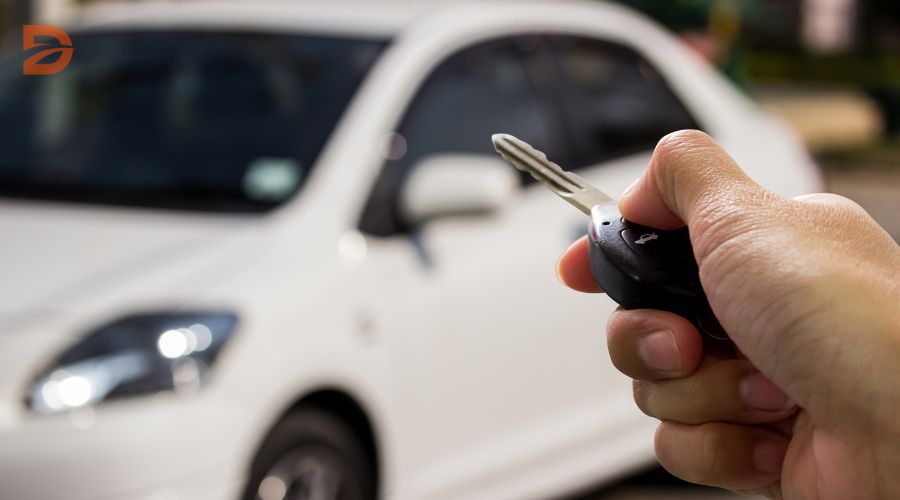As the global market for Advanced Driver Assistance Systems (ADAS) is projected to soar from $27 billion in 2022 to a staggering $83 billion by 2030, the debate over budget versus premium safety tech has never been more crucial. While these cutting-edge features like adaptive cruise control and automatic emergency braking can significantly improve vehicle safety, with studies showing a 27% reduction in bodily injury claims and 19% fewer property damage claims for ADAS-equipped vehicles, the price tag can be steep. The average repair bill for vehicles with these advanced safety systems can be twice as high as for conventional vehicles, with additional costs of up to $3,000 for minor incidents. So, the question remains: is the extra investment in premium safety tech worth it?
Key Takeaways
- The global ADAS market is expected to grow by 12% annually, reaching $83 billion by 2030.
- ADAS-equipped vehicles demonstrate a 27% reduction in bodily injury claims and 19% fewer property damage claims.
- Advanced safety features can double the average repair bill for vehicles following a collision.
- A combination of crash avoidance technologies can reduce accident frequency by up to 3.5%.
- Some drivers choose to disable advanced safety features due to the added costs and complexity.
Understanding the Difference Between Budget and Premium Safety Features
When it comes to car safety, the divide between budget and premium features can be significant. While budget tires may cost as little as $100 per tire, premium tires can range from $200 to $500 per tire. The higher price tag of premium tires is often attributed to increased research and development, as well as the use of higher-quality materials.
Cost and Value Comparison
Premium tires generally offer better handling, grip, and braking performance, especially in harsh driving conditions. They also tend to have increased durability and a longer lifespan compared to their budget counterparts. However, budget tires have also improved over the years and may be sufficient for drivers who primarily use their vehicles for urban, short-distance trips.
Performance and Durability Factors
When it comes to performance and durability, premium safety features can provide significant advantages. Advanced braking systems, collision avoidance technology, and noise reduction features found in premium vehicles can enhance the overall driving experience and safety on the road. The tire quality and tire brands used can also play a crucial role in the vehicle’s handling and responsiveness, especially in challenging weather conditions.
Ultimately, the decision to invest in budget vs premium safety tech comes down to a cost-benefit analysis. Factors like vehicle type, driving habits, and personal preferences will all play a role in determining whether the added cost of premium safety features is worth the investment.
Budget vs premium safety tech, cost analysis
When it comes to vehicle safety features, the choice between budget and premium options can have significant financial implications. While advanced safety technologies like ADAS (Advanced Driver Assistance Systems) can undoubtedly help prevent accidents and mitigate the severity of collisions, they also introduce additional complexities and higher repair costs.
The intricate sensors, cameras, and precise calibration requirements of ADAS-equipped vehicles can more than double the average repair bill following a collision. Even minor incidents can add up to $3,000 in extra costs due to the specialized nature of these systems. Insurance companies are still assessing the long-term impact of these technologies, and discounts for ADAS-equipped vehicles are not yet widely available.
Consumers must carefully weigh the potential safety benefits against the higher upfront and maintenance costs when considering budget versus premium safety tech options. A thorough cost-benefit analysis can help determine the feasibility and value of investing in advanced safety features based on individual driving needs and budgetary constraints.
Some key factors to consider in the cost-benefit analysis include:
- Tangible costs: Initial purchase price, maintenance, and repair expenses
- Intangible costs: Impact on insurance premiums, potential decrease in resale value
- Tangible benefits: Improved safety, reduced accident severity, and potentially lower insurance rates
- Intangible benefits: Peace of mind, enhanced driving experience, and environmental impact
Ultimately, the decision to opt for budget or premium safety tech should be a carefully considered balance between financial prudence and personal safety priorities. By understanding the cost implications and weighing the pros and cons, consumers can make an informed choice that aligns with their driving needs and budgetary considerations.
Safety and Comfort: The Crucial Aspects
When it comes to purchasing a car, safety and comfort are undoubtedly two of the most crucial factors to consider. While budget-friendly models offer essential safety features, premium vehicles often boast advanced technologies that can significantly enhance both safety and driving experience.
Advanced Braking and Collision Avoidance
Premium cars are typically equipped with superior braking systems and collision avoidance technologies, which can dramatically improve safety on the road. For instance, vehicles with advanced braking systems and blind-spot monitoring have been shown to have a 14% lower crash involvement rate compared to models without these features. These cutting-edge technologies can react faster and provide enhanced protection in emergencies, potentially saving lives.
Noise Reduction and Terrain Adaptability
Comfort is also an essential aspect of the driving experience, and premium vehicles often excel in this regard. Premium tires, for example, can offer superior noise reduction, providing a more peaceful and enjoyable ride, especially for families with young children. Additionally, advanced suspension systems and terrain-adaptive features in premium cars can enhance performance and stability on various road conditions, ensuring a smoother and more comfortable journey.
While the added safety and comfort benefits of premium vehicles come at a higher cost, consumers must weigh the potential long-term advantages against the initial price tag. Ultimately, the decision will depend on individual driving needs and preferences, as well as the importance placed on safety and comfort in the overall vehicle selection process.
Weighing the Pros and Cons for Your Driving Needs
Choosing between budget and premium safety tech ultimately comes down to an individual’s driving needs, habits, and financial considerations. Drivers who primarily use their vehicles for short, urban trips may find that budget-friendly safety features are sufficient. However, those who frequently drive long distances or in challenging conditions may benefit more from the enhanced performance and safety of premium options.
When making this decision, it’s essential to conduct a careful cost-benefit analysis. This should consider not only the upfront costs but also the potential long-term savings in maintenance, repair, and insurance implications. Ultimately, consumers must weigh the tradeoffs and prioritize their safety and comfort requirements.
Pros and Cons of Budget vs. Premium Safety Tech
- Budget-Friendly Safety Tech: Offers basic collision avoidance features, standard airbags, and basic braking systems. May be sufficient for urban driving but may lack advanced capabilities for long-distance or off-road use.
- Premium Safety Tech: Provides more advanced features like adaptive cruise control, lane-keep assist, and enhanced braking systems. Offers superior performance and safety, especially in demanding driving conditions, but comes at a higher upfront cost.
Drivers must carefully evaluate their driving needs, budget, and long-term cost-benefit analysis to determine the best safety tech solution for their unique circumstances. Weighing the pros and cons of budget versus premium safety tech can help ensure a wise and informed decision that prioritizes safety, comfort, and cost-effectiveness.
Conclusion
In the end, the decision to invest in budget or premium safety tech comes down to a careful consideration of personal driving needs, financial constraints, and risk tolerance. While premium safety features offer enhanced performance, braking, and collision avoidance capabilities, they also come with a higher price tag and increased maintenance costs. Budget-friendly options may be a suitable choice for some drivers, providing basic safety and reliability at a more affordable cost.
Ultimately, consumers must weigh the pros and cons of each option and make a decision that aligns with their specific driving requirements and budgetary constraints. This ensures the best possible balance of safety, performance, and value when it comes to purchasing a vehicle. By understanding the differences between budget and premium safety technologies, drivers can make an informed decision that meets their individual needs and preferences on the road.
Whether opting for budget or premium safety tech, the goal is to prioritize driving safety while balancing cost and performance factors. By carefully evaluating the available options, drivers can make a purchasing decision that provides the optimal blend of protection, comfort, and value for their unique driving situation.
FAQ
What is the growth forecast for the global market for advanced driver assistance systems (ADAS)?
According to research, the global market for advanced driver assistance systems (ADAS) is projected to grow from billion in 2022 to billion by 2030, a 12% annual growth rate.
How much can ADAS features improve vehicle safety?
Studies show that ADAS features like adaptive cruise control, automatic emergency braking, and lane departure warning can significantly improve vehicle safety, with a 27% reduction in bodily injury claims and 19% fewer property damage claims for ADAS-equipped vehicles.
How much more expensive can ADAS-equipped vehicles be to repair?
ADAS features can also be more expensive to repair, with the average repair bill up to twice as high as for conventional vehicles due to the complex sensors and calibration requirements.
What is the cost difference between budget and premium tires?
Budget tires can cost as little as 0 per tire, while premium tires can range from 0 to 0 per tire. The higher cost of premium tires is often attributed to the increased research and development and use of higher-quality materials.
What are the benefits of premium tires?
Premium tires generally offer better handling, grip, and braking performance, especially in harsh driving conditions, as well as increased durability and lifespan.
When is it worth the investment in premium safety features?
Drivers who frequently drive long distances or in challenging conditions may benefit more from the enhanced performance and safety of premium safety features, while those who primarily use their vehicles for short, urban trips may find that budget-friendly safety features are sufficient.
How can the decision between budget and premium safety tech impact maintenance and insurance costs?
The sensors, cameras, and calibration requirements of ADAS-equipped vehicles can double the average repair bill following a collision, with even minor incidents potentially adding up to,000 in extra costs. Insurance companies are still assessing the long-term impact of these technologies, and discounts for ADAS-equipped vehicles are not yet widely available.










